
TransLink, formally the South Coast British Columbia Transportation Authority, is the statutory authority responsible for the regional transportation network of Metro Vancouver in British Columbia, Canada, including public transport, major roads and bridges. Its main operating facilities are located in the city of New Westminster.

Caboolture railway station is located on the North Coast line in Queensland, Australia. It serves the urban centre of Caboolture in the Moreton Bay Region.

Transport for Brisbane, previously called Brisbane Transport, is an organisational division of the Brisbane City Council, responsible through its related Council Committee for providing policy and advice to Brisbane City Council, and for delivering various public transport services across the City of Brisbane. The division does this as part of an agreement with Translink, an agency of the Department of Transport and Main Roads that operates public transport across South East Queensland.

The South East Busway is a grade separated bus-only road running south from the Brisbane central business district to Eight Mile Plains in Queensland, Australia. The busway was completed to Woolloongabba in September 2000 and to Eight Mile Plains in April 2001. An extension of the busway to School Road at Rochedale was completed in 2014 with no additional busway stations. The maximum capacity of the busway is 18,000 commuters an hour during peak periods. The busway carries an estimated 70 million passengers annually.
The Northern Busway is a bus-only road running north from the Brisbane central business district to the Royal Brisbane & Women's Hospital in Queensland, Australia. The first section of the busway opened on 23 February 2004 with one station at QUT Kelvin Grove. In December 2005, Normanby and Herston stations opened.
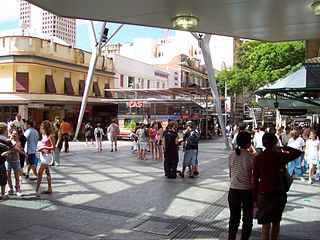
Queen Street bus station is the primary bus terminus in Brisbane central business district in Queensland, Australia. It is underneath The Myer Centre and Queen Street Mall. It opened on 26 March 1988 along with the Myer Centre. At the time it was the largest underground diesel bus station in the world.
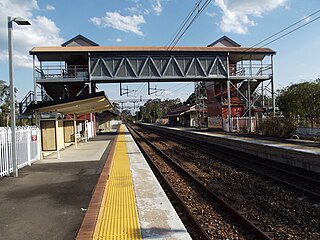
Landsborough railway station is located on the North Coast line in Queensland, Australia. It serves the town of Landsborough in the Sunshine Coast Region.

Greenslopes busway station is located in Brisbane, Australia serving the suburb of Greenslopes.
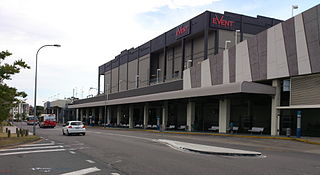
Carindale bus station is located in Brisbane, Australia serving the suburb of Carindale and Westfield Carindale. It was first used on 11 March 1991, being officially opened on 1 July 1991.
Translink is the public transit agency for Queensland, and is part of the Department of Transport and Main Roads. Translink was first introduced by the Queensland Government in June 2003 to orchestrate bus, ferry, rail and light rail services. They work with Brisbane Airtrain, Transport for Brisbane, RiverCity Ferries, Queensland Rail and other operators to provide services. Translink operates an integrated ticketing system across Queensland and the go card system to allow the use of one ticket on multiple services in South East Queensland.

Transport in Brisbane, the capital and largest city of Queensland, Australia, is provided by road, rail, river and bay ferries, footpaths, bikepaths, sea and air.

The Gold Coast is the largest regional city and fastest growing city in Australia. As a result, the Gold Coast has a wide range of public and private transport options from cars and bikes to buses, heavy rail and light rail. The car is the dominant mode of transport in the city with an extensive arterial road network that connects the standard residential streets with major suburbs and motorways.
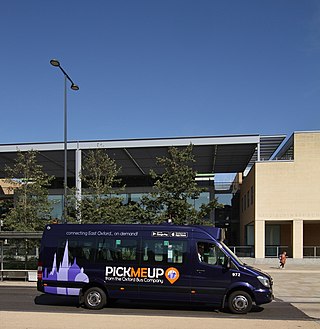
Demand-responsive transport (DRT), also known as demand-responsive transit, demand-responsive service, Dial-a-Ride transit, flexible transport services, Microtransit or Non-Emergency Medical Transport (NEMT) is a form of shared private or quasi-public transport for groups traveling where vehicles alter their routes each journey based on particular transport demand without using a fixed route or timetabled journeys. These vehicles typically pick-up and drop-off passengers in locations according to passengers needs and can include taxis, buses or other vehicles. Passengers can typically summon the service with a mobile phone app or by telephone; telephone is particularly relevant to older users who may not be conversant with technology.
qconnect was a network of integrated public passenger transport services that cover subsidised and/or regulated bus, coach and aviation networks in Regional Queensland, Australia. It was introduced by the Queensland Government in December 2007, and is an agency operated by the Department of Transport and Main Roads (TMR). qconnect provides public transport services and greater connectivity and accessibility of services throughout regional, rural and remote Queensland by working with contracted transport operators.
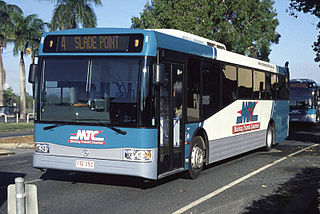
Mackay Transit is the principal bus operator in Mackay in Queensland operating services under the Translink scheme in regional Queensland.
The go card is an electronic smartcard ticketing system developed by Cubic Corporation, which is currently used on the Translink public transport network in South East Queensland, Australia. To use the go card, users hold the card less than 10 cm away from the reader to "touch on" before starting a journey, and must do the same to "touch off" the service at the end of the journey. The cost of each journey is deducted from the go card balance.
NightLink is the name given to the all-night Translink services that leave Fortitude Valley, Brisbane City and Surfers Paradise on the Gold Coast late Friday and Saturday nights.

Since the mid-1990s, a 27 kilometre bus rapid transit network has been developed in Brisbane, Australia. It comprises grade-separated bus-only corridors, complementing the Queensland Rail Citytrain network. Management of the busway network is the responsibility of Translink as coordinator of South East Queensland's integrated public transport system.

Glider is a bus rapid transit system in Belfast, Northern Ireland, designed to improve the efficiency of mass transit in the city by connecting East and West Belfast and the Titanic Quarter via the city centre. The service is operated by Translink.

Dutton Park Place busway station is located in Brisbane, Australia serving the suburb of Dutton Park. It is the penultimate westbound stop on the Eastern Busway.


















